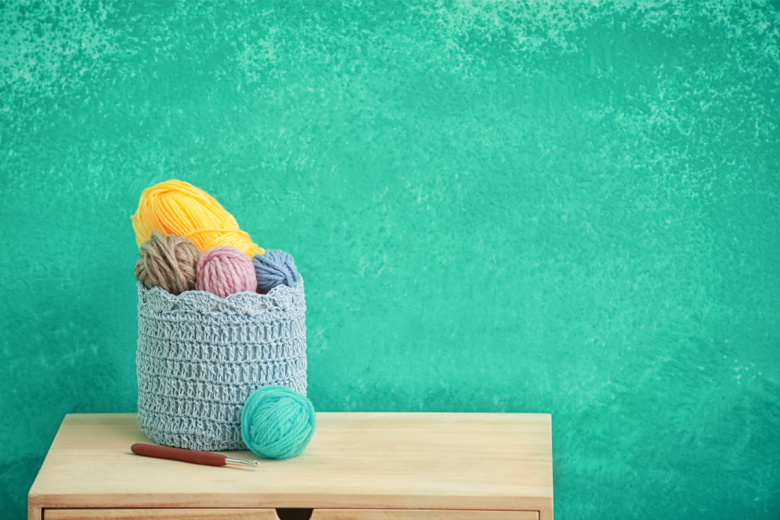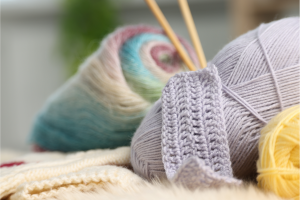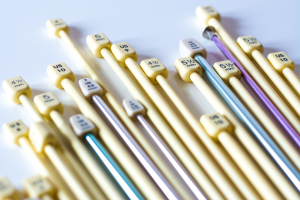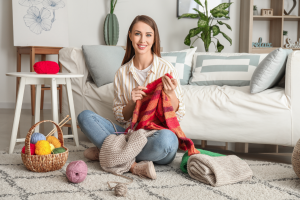When you’re just starting out with crochet or knitting, one of the most important decisions you’ll make is choosing the right yarn. The type of yarn you select can greatly impact the outcome of your project, and for beginners, it can make the difference between frustration and success. Whether you’re crafting your first scarf or making a cozy blanket, understanding how different yarns work and how they influence your project is crucial for achieving the best results.
Choosing the right yarn is not just about color or texture; it also involves considering factors such as weight, fiber content, and even the yarn’s elasticity. The wrong choice can lead to difficulty in your stitches, uneven tension, or even projects that don’t look as planned. For beginners, these challenges can be discouraging, but with the right yarn, you’ll find your crafting experience much more enjoyable and fulfilling.
This guide will help you navigate the world of yarns, providing you with essential tips and insights on selecting the perfect yarn for your projects. By understanding the different types of yarn and how they influence your work, you’ll be on your way to creating beautiful, well-made items from the start. Let’s explore the factors that make yarn selection an important step in the crafting process.
Common Types of Yarn for Beginners: The Basics
When you’re starting out, it’s important to understand the different types of yarn available. The most common yarns for beginners are made from natural fibers like cotton and wool, or synthetic fibers like acrylic. Each type has its own characteristics, which can affect the way your project turns out. As a beginner, you’ll want to choose a yarn that is easy to work with and forgiving of mistakes.
Acrylic Yarn is often the go-to choice for beginners due to its affordability, availability in a wide range of colors, and ease of care. It’s soft, machine washable, and comes in various weights, making it versatile for many projects. Acrylic yarn is great for practicing basic stitches and techniques without worrying about damaging delicate fibers.
Cotton Yarn is another popular choice, especially for projects like dishcloths or summer garments. It’s durable and has a smooth texture that’s easy to work with, though it can sometimes be less elastic than acrylic, meaning your stitches may not have the same stretch. Cotton is great for projects that need structure and shape.
Cotton Yarn vs. Acrylic Yarn: Which Is the Better Option?
For beginners, the choice between cotton and acrylic yarn often depends on the type of project you’re working on and personal preferences. While both fibers are suitable for a wide range of projects, there are key differences to consider.
Acrylic Yarn tends to be softer and more elastic, making it ideal for beginners who are just starting to practice their tension and stitch consistency. It’s also affordable and comes in a wide variety of colors and textures, giving you plenty of options to experiment with.
Cotton Yarn, on the other hand, is firmer and doesn’t have as much stretch, which makes it a better choice for projects like bags, dishcloths, or summer tops where you want a more structured finish. Cotton yarn can be a little more challenging for beginners due to its lack of elasticity, but it’s a great option once you’re comfortable with basic techniques.
How to Choose Yarn Weight for Different Projects
Yarn weight refers to the thickness of the yarn, which can affect how your project turns out. Choosing the right yarn weight is crucial because it determines how your stitches will look and how quickly your project will come together.
Lightweight yarn (such as sport or DK weight) is perfect for delicate projects like shawls, lightweight scarves, and baby clothes. It’s also a good choice for beginners who are practicing finer, more detailed stitches.
Medium-weight yarn (such as worsted weight) is versatile and easy to work with, making it the most popular choice for beginners. It’s great for a wide range of projects, including scarves, blankets, and sweaters. It provides a good balance between speed and detail.
Heavyweight yarn (such as bulky or super bulky) is thicker and works up quickly, which can be motivating for beginners who want to see progress fast. It’s perfect for warm, cozy projects like blankets and hats, but it can be harder to handle for those just starting out.
Yarn with Special Textures: When to Use Them and How to Handle Them
Yarns with special textures, such as boucle or chenille, can add a unique touch to your projects but may be more difficult for beginners to handle. These textured yarns can be tricky because their structure can make it harder to see stitches, which could lead to uneven work.
For beginners, it’s recommended to practice with smooth, solid-colored yarns first. Once you’re comfortable with basic stitches and techniques, you can experiment with textured yarns. When using textured yarns, it’s important to focus on tension and stitch consistency to avoid frustration.
Crochet Yarn vs. Knitting Yarn: Differences and Tips
Crochet and knitting both use yarn, but the way you work with the yarn differs between the two techniques. While the yarn itself may not differ significantly for each craft, there are some considerations to keep in mind.
For crochet, you’ll generally want a yarn that provides a bit of elasticity to make it easier to work with the stitches. Lighter yarns are good for projects that need flexibility, while heavier yarns work well for projects that need structure.
For knitting, it’s often recommended to use a yarn with a smooth texture that allows your needles to slide easily through the loops. Yarn with less elasticity can work well for projects like knitted garments where a more structured, fitted look is desired.
Yarn Tension and How to Adjust It
Tension refers to how tightly or loosely you hold your yarn as you work. It plays a crucial role in the consistency of your stitches and the overall appearance of your project. Beginners often struggle with finding the right tension, leading to uneven stitches or a project that’s too tight or too loose.
To adjust your tension, try experimenting with how you hold your yarn and make sure you’re not pulling it too tightly. If your stitches are too tight, try loosening your grip on the yarn. If they’re too loose, try holding the yarn a bit more firmly. Practice and awareness of how you hold the yarn will help you achieve more consistent tension.
Choosing Sustainable and Eco-Friendly Yarns for Beginners
As more crafters become aware of the environmental impact of their choices, many are turning to sustainable and eco-friendly yarns. These yarns are made from renewable resources and are often produced with environmentally conscious methods.
For beginners, there are several options for sustainable yarns, such as organic cotton, bamboo, and recycled polyester. These yarns tend to be soft and gentle on the skin, making them great choices for garments and accessories. While eco-friendly yarns can sometimes be more expensive than traditional options, they offer the satisfaction of knowing you’re supporting environmentally responsible practices.
Choosing sustainable yarns is a great way to start your crafting journey with a focus on both your craft and the planet. By considering eco-friendly options, you can make a positive impact while creating beautiful, handmade projects.
Common Types of Yarn for Beginners: The Basics
When you’re starting out, it’s important to understand the different types of yarn available. The most common yarns for beginners are made from natural fibers like cotton and wool, or synthetic fibers like acrylic. Each type has its own characteristics, which can affect the way your project turns out. As a beginner, you’ll want to choose a yarn that is easy to work with and forgiving of mistakes.
Acrylic Yarn is often the go-to choice for beginners due to its affordability, availability in a wide range of colors, and ease of care. It’s soft, machine washable, and comes in various weights, making it versatile for many projects. Acrylic yarn is great for practicing basic stitches and techniques without worrying about damaging delicate fibers.
Cotton Yarn is another popular choice, especially for projects like dishcloths or summer garments. It’s durable and has a smooth texture that’s easy to work with, though it can sometimes be less elastic than acrylic, meaning your stitches may not have the same stretch. Cotton is great for projects that need structure and shape.
Cotton Yarn vs. Acrylic Yarn: Which Is the Better Option?
For beginners, the choice between cotton and acrylic yarn often depends on the type of project you’re working on and personal preferences. While both fibers are suitable for a wide range of projects, there are key differences to consider.
Acrylic Yarn tends to be softer and more elastic, making it ideal for beginners who are just starting to practice their tension and stitch consistency. It’s also affordable and comes in a wide variety of colors and textures, giving you plenty of options to experiment with.
Cotton Yarn, on the other hand, is firmer and doesn’t have as much stretch, which makes it a better choice for projects like bags, dishcloths, or summer tops where you want a more structured finish. Cotton yarn can be a little more challenging for beginners due to its lack of elasticity, but it’s a great option once you’re comfortable with basic techniques.
How to Choose Yarn Weight for Different Projects
Yarn weight refers to the thickness of the yarn, which can affect how your project turns out. Choosing the right yarn weight is crucial because it determines how your stitches will look and how quickly your project will come together.
Lightweight yarn (such as sport or DK weight) is perfect for delicate projects like shawls, lightweight scarves, and baby clothes. It’s also a good choice for beginners who are practicing finer, more detailed stitches.
Medium-weight yarn (such as worsted weight) is versatile and easy to work with, making it the most popular choice for beginners. It’s great for a wide range of projects, including scarves, blankets, and sweaters. It provides a good balance between speed and detail.
Heavyweight yarn (such as bulky or super bulky) is thicker and works up quickly, which can be motivating for beginners who want to see progress fast. It’s perfect for warm, cozy projects like blankets and hats, but it can be harder to handle for those just starting out.
Yarn with Special Textures: When to Use Them and How to Handle Them
Yarns with special textures, such as boucle or chenille, can add a unique touch to your projects but may be more difficult for beginners to handle. These textured yarns can be tricky because their structure can make it harder to see stitches, which could lead to uneven work.
For beginners, it’s recommended to practice with smooth, solid-colored yarns first. Once you’re comfortable with basic stitches and techniques, you can experiment with textured yarns. When using textured yarns, it’s important to focus on tension and stitch consistency to avoid frustration.
Crochet Yarn vs. Knitting Yarn: Differences and Tips
Crochet and knitting both use yarn, but the way you work with the yarn differs between the two techniques. While the yarn itself may not differ significantly for each craft, there are some considerations to keep in mind.
For crochet, you’ll generally want a yarn that provides a bit of elasticity to make it easier to work with the stitches. Lighter yarns are good for projects that need flexibility, while heavier yarns work well for projects that need structure.
For knitting, it’s often recommended to use a yarn with a smooth texture that allows your needles to slide easily through the loops. Yarn with less elasticity can work well for projects like knitted garments where a more structured, fitted look is desired.
Yarn Tension and How to Adjust It
Tension refers to how tightly or loosely you hold your yarn as you work. It plays a crucial role in the consistency of your stitches and the overall appearance of your project. Beginners often struggle with finding the right tension, leading to uneven stitches or a project that’s too tight or too loose.
To adjust your tension, try experimenting with how you hold your yarn and make sure you’re not pulling it too tightly. If your stitches are too tight, try loosening your grip on the yarn. If they’re too loose, try holding the yarn a bit more firmly. Practice and awareness of how you hold the yarn will help you achieve more consistent tension.
Choosing Sustainable and Eco-Friendly Yarns for Beginners
As more crafters become aware of the environmental impact of their choices, many are turning to sustainable and eco-friendly yarns. These yarns are made from renewable resources and are often produced with environmentally conscious methods.
For beginners, there are several options for sustainable yarns, such as organic cotton, bamboo, and recycled polyester. These yarns tend to be soft and gentle on the skin, making them great choices for garments and accessories. While eco-friendly yarns can sometimes be more expensive than traditional options, they offer the satisfaction of knowing you’re supporting environmentally responsible practices.
Choosing sustainable yarns is a great way to start your crafting journey with a focus on both your craft and the planet. By considering eco-friendly options, you can make a positive impact while creating beautiful, handmade projects.
Common Types of Yarn for Beginners: The Basics
When you’re starting out, it’s important to understand the different types of yarn available. The most common yarns for beginners are made from natural fibers like cotton and wool, or synthetic fibers like acrylic. Each type has its own characteristics, which can affect the way your project turns out. As a beginner, you’ll want to choose a yarn that is easy to work with and forgiving of mistakes.
Acrylic Yarn is often the go-to choice for beginners due to its affordability, availability in a wide range of colors, and ease of care. It’s soft, machine washable, and comes in various weights, making it versatile for many projects. Acrylic yarn is great for practicing basic stitches and techniques without worrying about damaging delicate fibers.
Cotton Yarn is another popular choice, especially for projects like dishcloths or summer garments. It’s durable and has a smooth texture that’s easy to work with, though it can sometimes be less elastic than acrylic, meaning your stitches may not have the same stretch. Cotton is great for projects that need structure and shape.
Cotton Yarn vs. Acrylic Yarn: Which Is the Better Option?
For beginners, the choice between cotton and acrylic yarn often depends on the type of project you’re working on and personal preferences. While both fibers are suitable for a wide range of projects, there are key differences to consider.
Acrylic Yarn tends to be softer and more elastic, making it ideal for beginners who are just starting to practice their tension and stitch consistency. It’s also affordable and comes in a wide variety of colors and textures, giving you plenty of options to experiment with.
Cotton Yarn, on the other hand, is firmer and doesn’t have as much stretch, which makes it a better choice for projects like bags, dishcloths, or summer tops where you want a more structured finish. Cotton yarn can be a little more challenging for beginners due to its lack of elasticity, but it’s a great option once you’re comfortable with basic techniques.
How to Choose Yarn Weight for Different Projects
Yarn weight refers to the thickness of the yarn, which can affect how your project turns out. Choosing the right yarn weight is crucial because it determines how your stitches will look and how quickly your project will come together.
Lightweight yarn (such as sport or DK weight) is perfect for delicate projects like shawls, lightweight scarves, and baby clothes. It’s also a good choice for beginners who are practicing finer, more detailed stitches.
Medium-weight yarn (such as worsted weight) is versatile and easy to work with, making it the most popular choice for beginners. It’s great for a wide range of projects, including scarves, blankets, and sweaters. It provides a good balance between speed and detail.
Heavyweight yarn (such as bulky or super bulky) is thicker and works up quickly, which can be motivating for beginners who want to see progress fast. It’s perfect for warm, cozy projects like blankets and hats, but it can be harder to handle for those just starting out.
Yarn with Special Textures: When to Use Them and How to Handle Them
Yarns with special textures, such as boucle or chenille, can add a unique touch to your projects but may be more difficult for beginners to handle. These textured yarns can be tricky because their structure can make it harder to see stitches, which could lead to uneven work.
For beginners, it’s recommended to practice with smooth, solid-colored yarns first. Once you’re comfortable with basic stitches and techniques, you can experiment with textured yarns. When using textured yarns, it’s important to focus on tension and stitch consistency to avoid frustration.
Crochet Yarn vs. Knitting Yarn: Differences and Tips
Crochet and knitting both use yarn, but the way you work with the yarn differs between the two techniques. While the yarn itself may not differ significantly for each craft, there are some considerations to keep in mind.
For crochet, you’ll generally want a yarn that provides a bit of elasticity to make it easier to work with the stitches. Lighter yarns are good for projects that need flexibility, while heavier yarns work well for projects that need structure.
For knitting, it’s often recommended to use a yarn with a smooth texture that allows your needles to slide easily through the loops. Yarn with less elasticity can work well for projects like knitted garments where a more structured, fitted look is desired.
Yarn Tension and How to Adjust It
Tension refers to how tightly or loosely you hold your yarn as you work. It plays a crucial role in the consistency of your stitches and the overall appearance of your project. Beginners often struggle with finding the right tension, leading to uneven stitches or a project that’s too tight or too loose.
To adjust your tension, try experimenting with how you hold your yarn and make sure you’re not pulling it too tightly. If your stitches are too tight, try loosening your grip on the yarn. If they’re too loose, try holding the yarn a bit more firmly. Practice and awareness of how you hold the yarn will help you achieve more consistent tension.
Choosing Sustainable and Eco-Friendly Yarns for Beginners
As more crafters become aware of the environmental impact of their choices, many are turning to sustainable and eco-friendly yarns. These yarns are made from renewable resources and are often produced with environmentally conscious methods.
For beginners, there are several options for sustainable yarns, such as organic cotton, bamboo, and recycled polyester. These yarns tend to be soft and gentle on the skin, making them great choices for garments and accessories. While eco-friendly yarns can sometimes be more expensive than traditional options, they offer the satisfaction of knowing you’re supporting environmentally responsible practices.
Choosing sustainable yarns is a great way to start your crafting journey with a focus on both your craft and the planet. By considering eco-friendly options, you can make a positive impact while creating beautiful, handmade projects.




